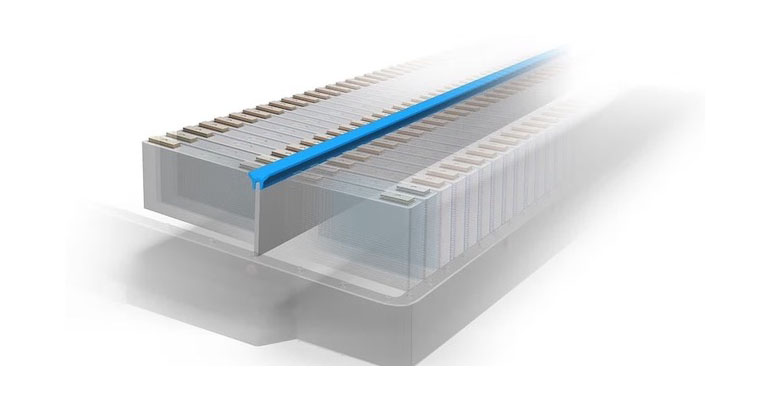
Customizable 3D Barriers Prevent Thermal Runaway in EVs

Range-enhancing high-energy-density lithium-ion batteries increase the risk of thermal runaway. As a preventive measure, Freudenberg Sealing Technologies has developed thermal barriers fabricated by injection molding and extrusion that help to slow down thermal runaway by increasing resistance to propagation. The new three-dimensional (3D) thermal barriers can be used in various locations within the battery and have already proven reliable in their initial series productions.
Well over 100 million electric cars are expected to be on roads worldwide by 2030. To make electromobility more efficient in the future, many manufacturers are working on achieving higher ranges and shorter charging times. That is why high-performance batteries are one of the priorities in this development. But in lithium-ion batteries, higher energy density increases the risk of thermal runaway. Freudenberg Sealing Technologies has developed thermal barriers for this challenging environment, slowing down or even stopping thermal runaway by increasing thermal propagation resistance.
Thermal barriers available in custom geometries
“What is completely new is that the thermal barriers are now also available in customized, flexible 3D geometries, which makes it possible to use them in various locations within the battery and allows for integration of additional components,” said Andrew Espinoza, global vice president, technology, of the Oil Seals Powertrain & Driveline Division at Freudenberg Sealing Technologies.
Thermal runaway, which is the ignition or explosion of a battery cell caused by a self-reinforcing heating process, is a significant safety problem. It can be caused by a range of internal and external factors, such as overcharging, excessive discharging, damage, or heating of the battery. Thermal runaway releases not only flames and hot gases but also electrically conductive particles. These, in turn, can cause thermal propagation in adjacent cells and lead to short circuits in the electrical system. Thermal barriers act as protective layers that slow down or even prevent the heat and flames from spreading in the battery, which significantly increases safety.
New possibilities with 3D variants
Beyond the existing two-dimensional barriers, such as flat mats and thermal blankets, the 3D variant opens entirely new possibilities. Customer-specific 3D geometries can be produced in a variety of high- and low-volume manufacturing processes, such as injection molding and continuous extrusion. Profile seals, module separators, and covers, including those for bus bars, cooling lines, or electrical components, are examples of products currently being produced. Further, the manufactured, complex 3D geometries are lightweight and have minimal impact on the battery’s overall weight.
Materials withstand temperatures up to 1,200°C
Materials experts at Freudenberg Sealing Technologies have developed heat-resistant, electrical, and thermal insulating materials specifically for these applications. Testing of these materials has been completed in-house, proving that they can safely withstand temperatures up to 1,200°C. Special compositions make these compounded polymers highly heat-resistant. It also makes them resistant against particle impacts, such as those that occur when cells are vented. The 3D thermal barriers utilize elastomer solutions, whether in solid form or as a foam, as well as plastic components molded of Quantix Ultra, which enables complex geometries.
Quantix Ultra compounds are semi-crystalline thermoplastics with significantly higher glass transition temperatures than conventional thermoplastics. However, once the glass transition temperature is exceeded, rather than melting, the material becomes elastic. In one lab test, a sample of the material less than one millimeter thick survived for 10 minutes in a flame reaching a temperature of 1,200°C.
“The three-dimensional thermal barriers and the utilized materials have gone through extensive testing that exceeds the required standards. They have proven their outstanding performance and reliability on bench tests as well as battery system testing. The products meet the highest quality standards, are certified pursuant to UL 94 V-0, and are already being used successfully in initial series production for the automotive industry,” said Espinoza.

Leave a Reply